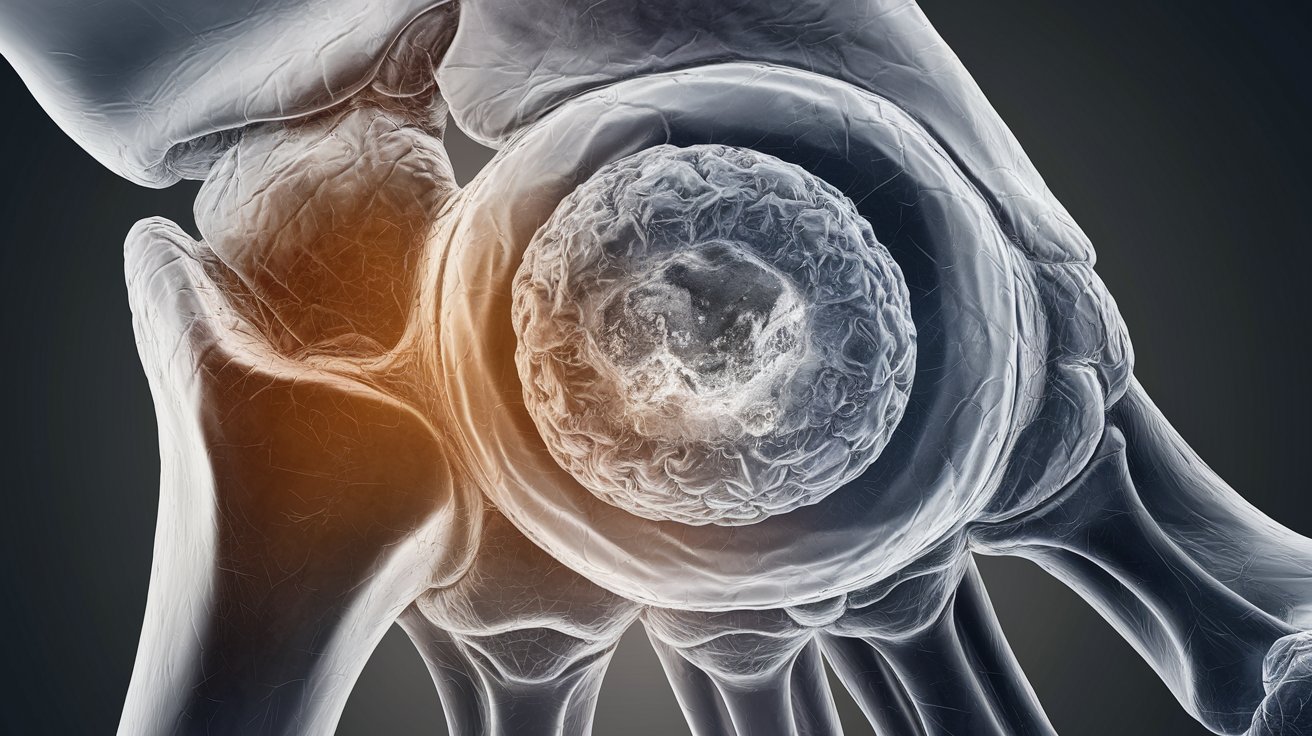
What exactly is a chondroma? Chondromas are benign cartilage tumors that can pop up in various parts of the body, including bones and soft tissues. These tumors are generally slow-growing and non-aggressive, making them less of a threat compared to malignant tumors. However, they can sometimes be mistaken for more serious conditions like chondrosarcomas. Chondromas come in different types, such as enchondromas, periosteal chondromas, and soft-tissue chondromas. Each type has its own unique characteristics and preferred locations in the body. Understanding these differences is crucial for proper diagnosis and treatment. Let's dive into 45 key facts about chondromas to get a comprehensive understanding of these benign tumors.
Key Takeaways:
- Chondromas are benign cartilage tumors that can grow in bones or soft tissues. They are usually slow-growing and non-aggressive, but can cause pain if they grow large enough.
- Most chondromas don't need treatment, but if they do, surgical excision is common. Proper diagnosis is crucial, as they can sometimes be mistaken for more serious conditions like chondrosarcomas.
What is a Chondroma?
Chondromas are benign cartilage tumors that can appear in various parts of the body. They are generally slow-growing and non-aggressive but can sometimes be mistaken for more serious conditions. Let's dive into some key facts about chondromas.
-
Definition of Chondroma
Chondromas are benign tumors composed of mature hyaline cartilage. They can arise in bones or soft tissues. -
Types of Chondromas
There are several types, including enchondromas, periosteal chondromas, and soft-tissue chondromas. -
Enchondromas
These occur in the medullary canal of bones and are the most common type. -
Periosteal or Juxtacortical Chondromas
These occur on the surface of bones and are less common than enchondromas. -
Soft-Tissue or Synovial Chondromas
These arise from the synovial sheaths of tendons or in the soft tissues adjacent to tendons, particularly in the hands and feet.
Incidence and Demographics
Understanding who is most likely to develop chondromas can help in early detection and management.
-
Incidence of Chondromas
Chondromas account for 27.5% of all bone tumors and 70% of all cartilage tumors in the United States. -
Enchondromas Specific Incidence
Enchondromas make up 12-24% of benign bone tumors and 3-10% of all bone tumors. -
Age Distribution
Enchondromas are evenly distributed across all age groups but peak in the third and fourth decades of life. -
Periosteal Chondromas Age Range
These are frequently diagnosed in the second or third decades of life. -
Sex Distribution
Enchondromas show no sex predilection, but periosteal chondromas are more common in males.
Clinical Presentation and Locations
Chondromas can be sneaky, often showing no symptoms until they grow large enough to cause issues.
-
Clinical Presentation
Chondromas are often asymptomatic and may be discovered incidentally during imaging studies for other reasons. -
Symptomatic Cases
They can cause pain if they grow large enough to compress surrounding tissues or if they occur in weight-bearing bones. -
Common Locations
Enchondromas commonly occur in the small bones of the hands and feet, with about 60% of cases found in these locations. -
Long Bones Involvement
The next most common sites are the long tubular bones, with the femur being the most frequently involved (17%), followed by the proximal humerus (7%).
Diagnostic Features
Proper diagnosis is crucial for effective treatment. Here are some key diagnostic features.
-
Radiographic Features
On radiographs, enchondromas typically appear as well-defined, lytic lesions within the medullary canal of bones. -
Characteristic Calcification
They may exhibit characteristic "rings and arcs" calcification patterns due to the cartilaginous matrix. -
Histopathological Features
Histologically, chondromas are composed of mature hyaline cartilage. -
Chicken Wire Calcification
Enchondromas show a characteristic "chicken wire" calcification pattern under polarized light microscopy. -
Diagnostic Challenges
Chondromas can sometimes be difficult to differentiate from more aggressive conditions like chondrosarcomas. -
Diagnostic Techniques
Diagnosis typically involves a combination of radiographic imaging, histopathological examination, and sometimes immunohistochemical staining.
Treatment and Prognosis
Most chondromas don't require treatment, but when they do, it's important to know the options.
-
Treatment of Chondromas
Most chondromas do not require treatment as they are benign and non-aggressive. -
Surgical Excision
If they cause symptoms or if there is a high suspicion of malignancy, surgical excision may be recommended. -
Surgical Approaches
For enchondromas, surgical excision often involves curettage followed by bone grafting to fill the defect. -
Periosteal Chondromas Surgery
Complete removal of the tumor is usually possible due to their superficial location. -
Complications of Treatment
Surgical excision carries risks such as infection, nerve damage, and recurrence. -
Post-Surgery Bone Weakness
In some cases, the bone may weaken post-surgery, requiring additional support. -
Prognosis
Given appropriate treatment, patients with benign chondromas generally have a good prognosis.
Differential Diagnosis and Mimics
Chondromas can sometimes look like other conditions, making accurate diagnosis essential.
-
Differential Diagnosis
Chondromas should be differentiated from other benign tumors such as ganglion cysts, myositis ossificans, and osteochondromas. -
Radiologic Mimics
Chondromas can sometimes mimic more aggressive conditions radiologically. -
Histological Mimics
Histologically, chondromas can be challenging to distinguish from chondrosarcomas. -
Immunohistochemical Markers
Immunohistochemical staining for markers like S100 and SOX9 can help differentiate between these entities.
Advanced Research and Future Directions
Ongoing research is shedding light on the complexities of chondromas and their malignant counterparts.
-
Stem Cell Involvement
Recent studies suggest that stem and progenitor cells play a crucial role in the proliferation and malignant degeneration of chondrosarcomas. -
Hypoxia and Angiogenesis
Hypoxia and angiogenesis are critical factors in the development and progression of chondrosarcomas. -
Local Invasion and Metastasis
Chondrosarcomas are known for their local invasive potential and can metastasize to distant sites. -
Primary Cilia in Chondrogenesis
Primary cilia play a significant role in chondrogenesis and cartilage maintenance. -
Epigenetic Regulation
Epigenetic regulation, particularly the role of microRNAs like miR-145, influences the expression of key genes involved in chondrogenesis.
Chondrosarcoma Subtypes and Challenges
Chondrosarcomas are the malignant counterparts of chondromas and present unique challenges.
-
Chondrosarcoma Subtypes
Chondrosarcomas can be classified into several subtypes based on their histological characteristics. -
Conventional Chondrosarcomas
These are the most common type and can be further divided into low-grade, intermediate-grade, and high-grade subtypes. -
Periosteal Chondrosarcomas
These arise from the periosteum and typically present as large lesions with minimal medullary canal involvement. -
Mesenchymal Chondrosarcomas
These are rare and exhibit biphasic histology with poorly differentiated mesenchymal cells mixed with islands of hyaline cartilage. -
Clear Cell Chondrosarcomas
These are characterized by sheets of cells with large round nuclei and distinct pale or clear cytoplasm. -
Dedifferentiated Chondrosarcomas
Dedifferentiated chondrosarcomas represent a variant where a low-grade chondrosarcoma abruptly transitions to a high-grade non-cartilaginous sarcoma. -
Secondary Chondrosarcomas
Secondary chondrosarcomas arise from osteochondromas and are characterized by a cartilage cap thickness ≥2 cm. -
Diagnostic Dilemmas
Differentiating between high- and intermediate-grade chondrosarcomas and low-grade tumors from benign enchondromas can be challenging. -
Treatment Algorithms
Treatment algorithms for chondrosarcomas vary based on the histologic grade of the tumor.
Final Thoughts on Chondroma
Chondromas, benign cartilage tumors, often fly under the radar due to their slow growth and non-aggressive nature. They can pop up in bones or soft tissues, with enchondromas being the most common type. While they usually don't cause symptoms, they might cause pain if they press on surrounding tissues. Diagnosing chondromas involves a mix of imaging and biopsy, sometimes making it tricky to distinguish them from more serious conditions like chondrosarcomas. Treatment isn't always necessary, but surgical removal is an option if symptoms arise or there's a risk of malignancy. Prognosis is generally good, with most patients remaining symptom-free post-treatment. Understanding chondromas' clinical presentation, radiographic features, and treatment options is key for effective management. Ongoing research into their molecular biology and potential therapies promises to improve outcomes for those affected by these rare tumors.
Frequently Asked Questions
Was this page helpful?
Our commitment to delivering trustworthy and engaging content is at the heart of what we do. Each fact on our site is contributed by real users like you, bringing a wealth of diverse insights and information. To ensure the highest standards of accuracy and reliability, our dedicated editors meticulously review each submission. This process guarantees that the facts we share are not only fascinating but also credible. Trust in our commitment to quality and authenticity as you explore and learn with us.


